If I were a betting man, I would lay a significant wager that the twenty-first century double rifles now accounting for the largest number of African game animals are those made by Westley Richards.
The old Birmingham firm has transformed itself, over the last twenty-five years, into one delivering the working rifle of choice for the quality-inspired modern hunter. Today, the future looks secure. However, the past two centuries provided a turbulent ride for this, one of England’s great gunmakers.
The foundations of the modern Westley Richards & Co. gun-making factory go back to the days of the flintlock. William Westley Richards was born in 1789, the year that Parisians stormed the Bastille and set France aflame with revolution. His family were middle-class Birmingham traders in jewellery, cutlery, guns and like items. They educated him well and, presumably, encouraged him into business. By the relatively tender age of twenty-two, he was the proprietor of his own gun-making firm.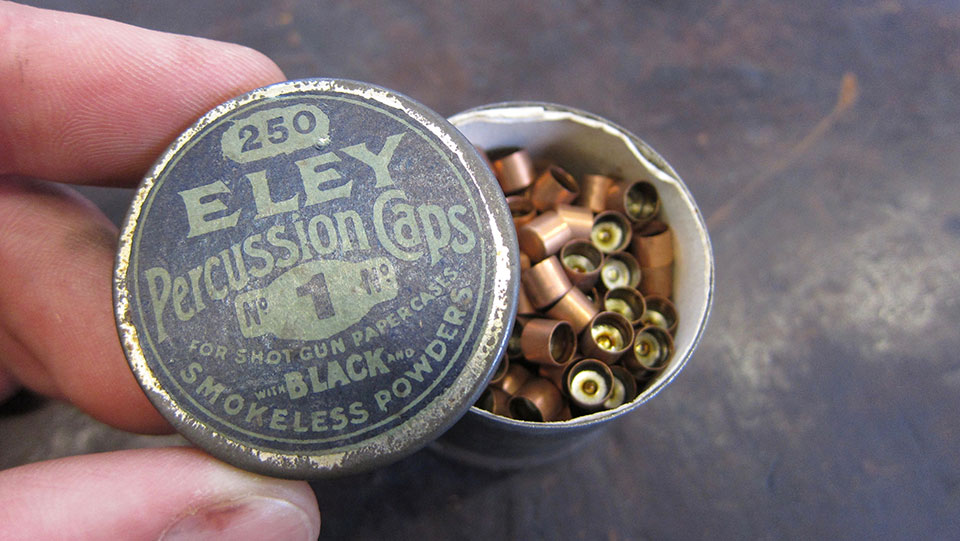
Birmingham in 1812 was a place to behold. De Tocqueville, in his journals, described it thus; ‘These folk never have a minute to themselves. They work as if they must get rich in the evening and die the next day. They are generally very intelligent people, but intelligent in the American way. The town itself has no analogy with other English provincial towns. It is an immense workshop, a huge forge, a vast shop. One only sees busy people and faces brown with smoke. One hears nothing but the sound of hammers and the whistle of steam escaping from boilers’. It was, then, the ideal location for a factory intent on housing a skilled and motivated labour force and producing complex machinery to very high standards.
William Westley Richards was a sportsman, a public spirited individual and a well respected businessman. His motto was ‘To be the maker of as good a gun as can be made’. He made his reputation in this pursuit and the company has been striving, for two centuries, to deliver on that sentiment.
Innovating from the earliest days of the business, William Westley Richards patented his first improvement to gun locks in 1821. However, his major contribution to the sportsman during this period was the 1831 copper primer patent, which heralded the demise of flintlock and pointed the way to the future of sporting gun and ammunition design. His ‘Waterproof Safety Primer’ took the copper-cap percussion ignition system into the realms of reliability and safety. “This…is the best. I have tried it repeatedly and never yet knew it to fail’ wrote Col. Peter Hawker, the shooting author and renowned sportsman, from his Longparish estate.
Hawker proved a long-time friend of the company, buying Westley Richards guns and writing favourably about the maker and his wares.
Hawker proved a long-time friend of the company, buying Westley Richards guns and writing favourably about the maker and his wares. He called Westley Richards barrels ‘perhaps as good as any in the world’ and, when visiting the factory, reported that it ‘surpasses any gun establishments I ever saw or heard of’. High praise indeed from the man who considered most Birmingham-made guns to be ‘in general, course and ill-designed’.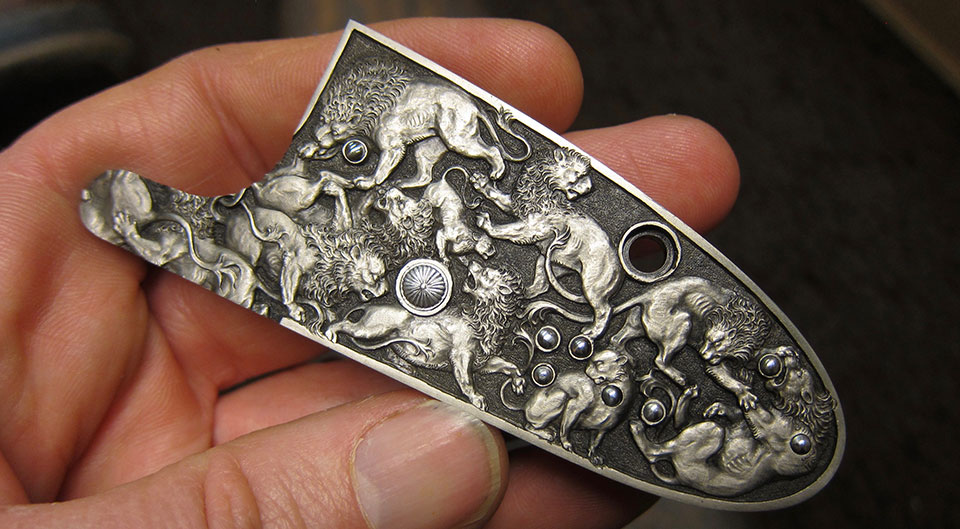
Like other gun makers of the time, William Westley Richards, and his successor son, Westley Richards, were involved in the development of firearms for sport and war, with many patents improving military rifles and ammunition; solid-drawn brass cartridges being notable amongst them. One of the firm’s other successes was the breech-loading, ‘monkey tail carbine’, which went into limited service in 1866, gaining popularity with cavalry and colonial forces.
Later, in 1868, a Westley Richards patent for a hinged, falling block breech-loader, pre-dated that of the Martini action adopted by the British Army. The patent infringement led to compensation of £43,000 being paid to Westley Richards by the British Government. That was significant sum, equating to over four-and-a-half million pounds today.
The transition from single shot to multi-shot repeating rifles required reliable ammunition that could stand the movement and friction of a mechanised operation. Westley Richards patented the solid drawn cartridge in 1871. These surpassed the coiled brass cartridge patented by John Rigby and proved ideal for use in bolt-action and other repeaters with centre-fire ignition.
Westley Richards managed the company through these inventive times but in 1872 he handed control to long-time employee and director, John Deeley, who held the reigns until 1899. In 1873, the firm patented the Deeley & Edge falling block rifle, which was strong, refined and simple, gaining popularity with the NRA as a target rifle.
Another of John Deeley’s achievements was taking on the task of improving the unreliable Lee-Metford service rifle, which had been adopted by the army in 1889. He designed a new bolt-head and bolt, for which he was paid £3,000. This ensured a future for the rifle that saw British forces through two world wars
So much for the military history of the firm; readers are, perhaps, more interested in the sporting arms, of which the list is long and distinguished. Victorian sporting rifles fell into distinct groups. Double rifles were produced on modified versions of actions also used for making shotguns. Clearly, the heavy-calibre rifle had to be fitted to a stronger frame, often with extra bolting or stability-improving features. The other avenue was the single barrelled breech-loader of single-shot or multi-shot repeater type. Westley Richards made them all, including falling-blocks and bolt-actions.
As regards double rifles, Westley Richards contributed some of the classic designs, many of which are still industry standards. The top-lever breech-loader originated with the firm, as did the 1875 Anson & Deeley ‘boxlock’, which became the most widely used platform for double rifles and shotguns for a century. The brilliantly simple, easy to manufacture and utterly reliable design, consisting of only eight parts, was a collaboration between John Deeley and the foreman at Westley Richards’s action shop, William Anson.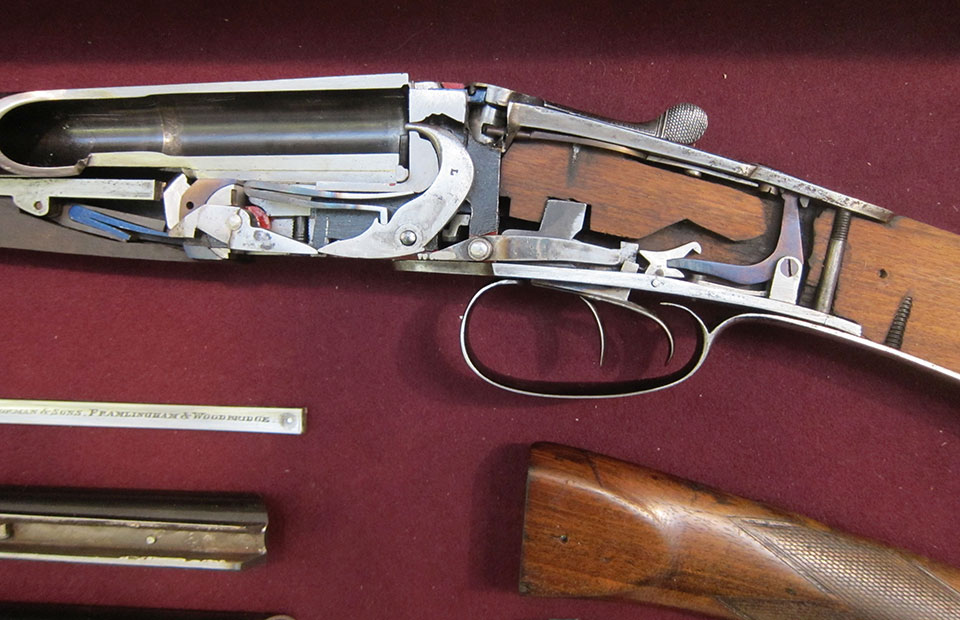
The A&D action established barrel-cocking as the norm and made mass production faster and cheaper, making it possible for good, reliable sporting rifles to reach a wider clientele. For African and Indian colonists the strength and simplicity of the A&D made it hugely attractive. Here was a rifle that you could positively abuse and it remained sound and dependable, even when used to fire heavy charges.
The A&D, now known as a ‘fixed lock’ rifle by the firm, was refined by another Managing Director, Leslie Taylor, in 1897. He sought to disguise the visible pins on the side of the action and his foreman came up with the design we know today as the hand-detachable lock, (drop-lock) with the lock work mounted on plates, which are inserted from below, via the bottom plate (which is now hinged).
The advantages of being able to remove all the lock work without tools, in a few seconds, are multiple. African hunters could clean their locks easily, or replace a faulty one in seconds, the rifle could also be incapacitated, for security reasons, at any time.
Both fixed lock and ‘drop-lock’ versions of Westley Richards double rifles became popular and both still feature as the standard models in the firm’s catalogue. It is, perhaps fair to say that, while London gun makers considered the sidelock to be the pinnacle of double rifle manufacture, at Westley Richards, ‘boxlock’ and ‘drop-lock’ models were very much considered ‘best’ rifles, with the Model de Luxe and Grande Lux representing the very highest levels of artistry, fit and finish.
Commentators had griped about the, subjectively assessed, lesser elegance of the boxlock since its inception, Teasdale-Buckell called it ‘Cobby, due to the thickness in the neighbourhood of the lock’, by comparison with contemporary hammer guns. This aesthetic may have been more of a handicap in the mind of the shotgun buyer. For the sportsman in need of a solid double rifle, I very much doubt such sentiment carried much weight.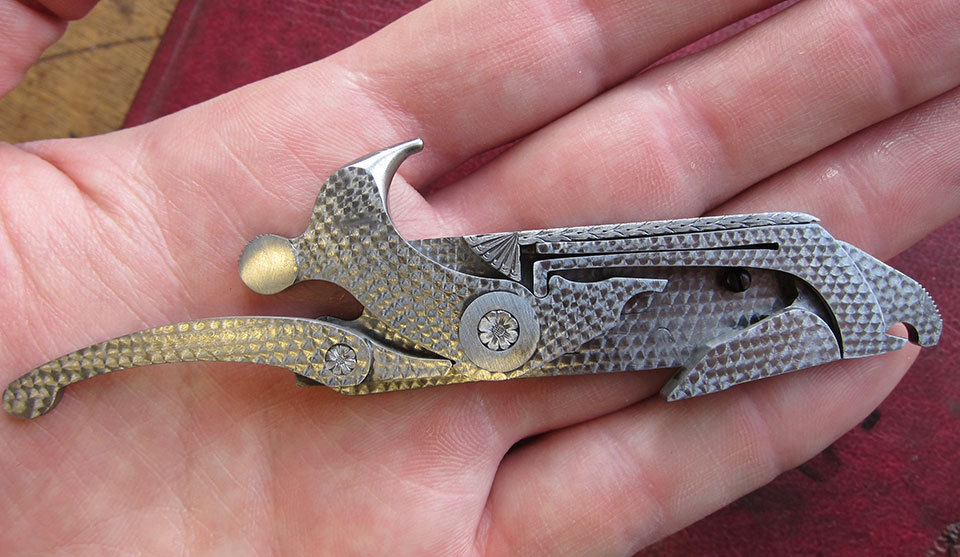
While the two major in-house designed double rifles formed the mainstay of production in that area, Westley Richards, now under the stewardship of Leslie Taylor, who had succeeded John Deeley, in 1899, continued to work on other forms of sporting rifle. Taylor was a serious ballistician and his heyday saw the transition from black powders to new ‘smokeless’ powders and his ideas were strongly channeled into the best means by which to take the greatest advantage of these, in terms of performance improvement.
For double rifles, ‘bore rifles’ and ‘black powder express’ rifles gave way to smaller bullets, pushed faster by the new powders, like Cordite and Rifleite, with sufficient penetration and shock-delivering power to make the old .500 deer rifle calibre into an elephant stopper.
For longer range work, Taylor patented the .318 and the .425 high velocity rounds for the bolt-action, propelled by Cordite and with a variety of bullets, each specific to the target species. His initials are retained for posterity in the form of the ’L-T’ capped bullet for use in rifles like the Explora 12-bore and Fauneta 20-bore; effectively Westley Richards’ answer to the Holland & Holland Paradox shot and ball gun. These were very popular in India, where they were effective as jungle rifles, as well as serving as shotguns, when required.
Alongside the double rifles and double gun/rifles on the Westley Richards production line in the first half of the twentieth century, other classic designs travelled and passed into the hands of the sportsmen of Empire. Farquharson falling-block single-shot rifles in all calibres, up to and including .600 nitro were made and sold. The 1920s and 1930s were halcyon days for both Empire and sporting gunnery. The equipment now provided to sportsmen visiting Africa or India was of the highest rank, both in terms of design, mechanical perfection and quality.
The 1920s and 1930s were halcyon days for both Empire and sporting gunnery.
Westley Richards supplied the rifles of the era that killed elephants for James Sutherland, tigers for the Maharajah of Patiala, African game of all sorts for George Eastman, and stood between life and death for professional hunters like J.A. Hunter. However, following the 1929 Wall Street Crash, orders for rifles in the ‘30s were slow and the workforce was cut, from one hundred, to forty men. Thankfully, Indian princes put in enough orders to keep the firm viable through the depression.
After WW2, a taxing period for all gunmakers, Westley Richards continued to supply rifles to India and to professional hunters in Africa, as well as their (increasingly American) safari clients. They supplied rifles, including a used .577 double to actor Stewart Grainger. Author Robert Ruark had a double .470 built and the ‘White Hunter’ model was coined in calibres .465, .470 and .500 to provide a ‘medium price’ working double boxlock for the professional in colonial service.
The period between the end of WW2 and 1994, when Simon Clode took over the company from his father, Walter, was more a story of survival, largely built on selling repatriated rifles from the collections of the Maharajahs, who had fallen on hard times under Indira Gandhi, than it was one of innovation and superlative quality. This endeavour enabled Walter Clode to keep the Bournbrook factory wheels turning during the lean years.
With Simon Clode’s ascendency to the position of Managing Director, and more optimistic economic sentiment at home and abroad, Westley Richards re-focussed on building the best quality rifles they could, reviving classic models that had fallen from production in an effort to reduce costs. The range of rifles now included a sidelock double, a fixed lock A&D double, a ‘drop-lock’ double and a Mauser bolt-action.
In 2008, Westley Richards submitted to the plans of the local council, which wanted to demolish the old factory for a road-building scheme. They took advantage of a good offer of compensation and re-modelled a 19th century enamel factory, near the Birmingham Gun Quarter, as a state-of-the art premises for manufacture and retail. With a significant shareholding investment by members of the Qatari royal family, Simon Clode had the means, the place and the vision to re-boot the brand and the products.
The interest of major collectors, many from the United States, enabled Clode to push his ambitions as far as he could. During his tenure, the firm produced scores of superb, exhibition-quality bespoke orders, as well as working doubles and bolt-rifles for African professional hunters and clients of more modest means.
I had the good fortune to hunt in Tanzania a year or two back. The rifle I was privileged to carry afield was a new Westley Richards .577 nitro express; to me the epitome of a Clode era Westley Richards double rifle. Engraving was beautiful, yet bold enough to survive the rigours of the bush, finish was wonderful, but the traditional oiling of the stock and quality wood accepted the sweat and dust of hard hunting without looking ‘shop soiled’, rather it began to ‘weather’ nicely.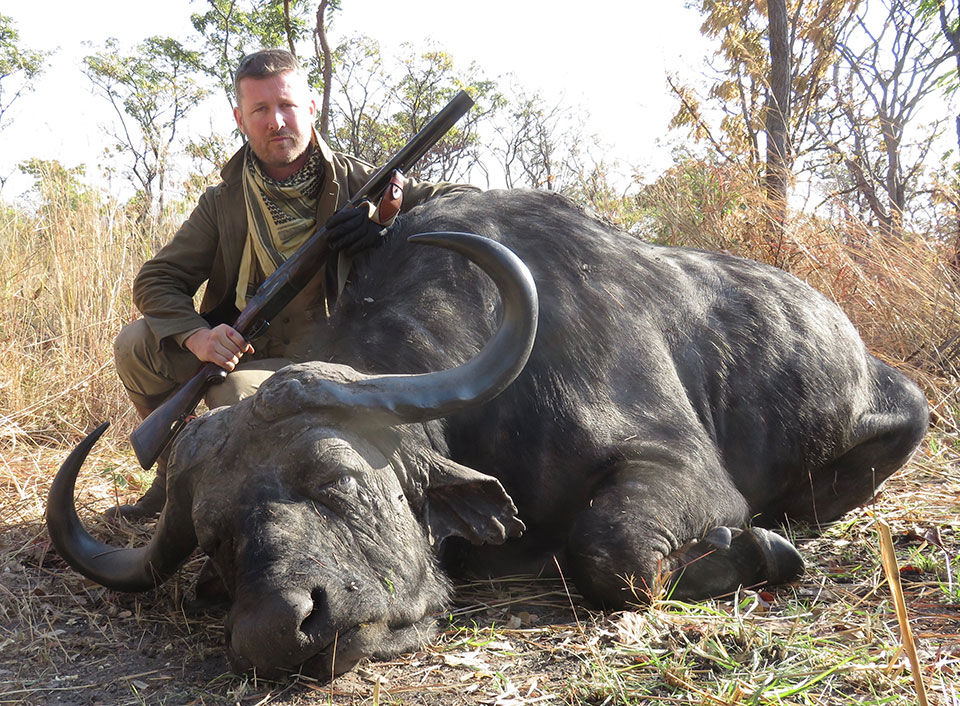
As for performance, the Cape Buffalo dropped where he stood when I shot him at twelve yards: one soft nose through the ‘boiler room’ and a solid behind the ear, as he threw up his head and collapsed. Never have I felt more secure when treading dangerous ground with a rifle in my hands. In my opinion, the Westley Richards hand-detachable double rifle is the obvious practical and aesthetic choice for the serious sportsman. The price for this model starts at £69,500.
To put that in perspective, it is about half the price of a Purdey. In 2005, Westley Richards re-introduced a side-lock model to use as a platform for their finest work. This back-action side-lock (like all their doubles) features the classic Westley Richards ‘Model C’ doll’s head and bolting top-lever combination. With prices starting at £95,000, most of these rifles are ordered as highly-embellished bespoke pieces by collectors, with the ‘extras’ costing multiples of the price of the basic platform.
For those looking for a modern version of a classic rifle for Africa, but wanting to focus on practicality rather than decoration, the fixed-lock A&D double fits the bill, just as it did in the inter-war years. With a starting price of £55,000, it is still a lot of money, but, if you can afford three weeks in Africa, hunting dangerous game, you need to have a fairly healthy bank balance and a bit of disposable income. If you can afford a basic Range Rover, then you can afford a Westley double, and I see an awful lot of Range Rovers on the road these days.
For the bolt-rifle enthusiast who wants something special, Westley Richards, like Rigby and Purdey, offer a Mauser ’98 type; either fixed or take-down, in any calibre up to .505 Gibbs. Every one is built on a scaled action - with four sizes from which to choose. At £30,000, the price is a little higher than the Rigby ‘London Best’ or the new Purdey titanium-frame model, both of which cost, in basic form, around £24,000. Westley Richards are not planning to increase production in order to cater to the lower reaches of the ‘expensive rifle’ market. They are focussed sharply on quality and their clients are people who will pay for it.
Everything Westley Richards makes today is a bespoke order, with the customer central to the production process.
Everything Westley Richards makes today is a bespoke order, with the customer central to the production process. The new Managing Director, Anthony Alborough-Tregear, who took over when Simon Clode died, aged just sixty, after a short, unexpected illness in 2016, is meticulous, experienced and relatively youthful. His passion for the firm and its products is strong and the order books are healthy. If you want a standard double rifle, the delivery time will be around three years. For a bolt-action, expect two-and-a-half years. More elaborately finished orders will, naturally, take longer to complete.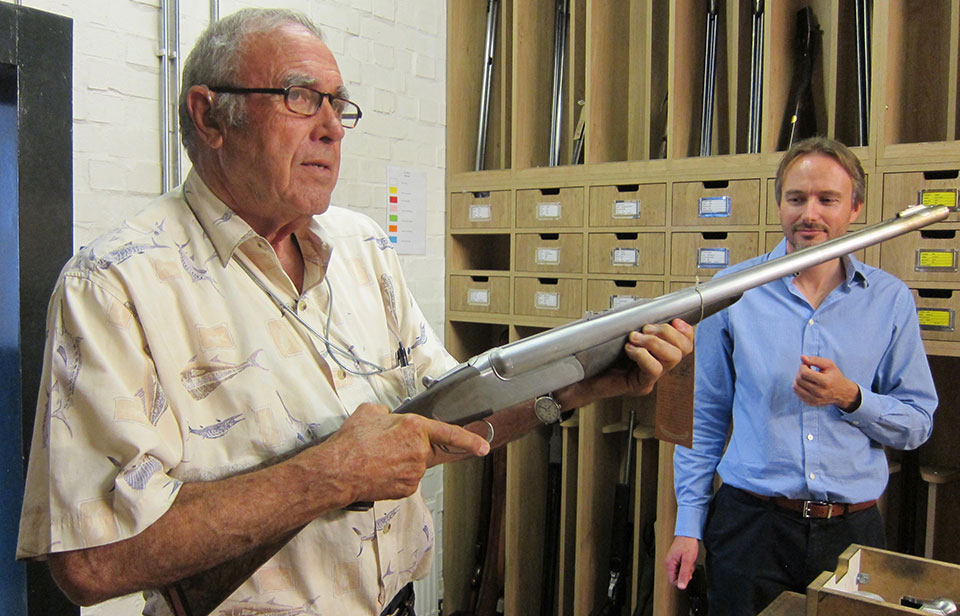
The future for Westley Richards will see increasing commissions for highly-embellished, museum-quality rifles. One .577 double, currently underway, has an engraving and stone-inlay budget of £250,000 and a final price tag of £450,000. Even bolt-action rifles are getting the ‘Grande Lux’ treatment; with a .425 now in production having £50,000 worth of engraving applied to it.
Anthony, (‘Trigger’ to his friends), anticipates the company will focus on this specialised, high-end, work under his tenure. “It is what our customers increasingly want”, he told me. With order books that have enough work to carry the company for four years, and a capacity of around 25 new-builds per year, Westley Richards looks like a confident player with a solid future, in a market it has gradually made its own.This firm, which claims to have made more double rifles than any other, will, I suspect, dominate the sector for decades to come.
Published by Vintage Guns Ltd on (modified )




